The teeth are one of the five main body parts affected by ectodermal dysplasia syndromes, and there are many different dental symptoms that can occur. However, dental symptoms do vary according to the type of ectodermal dysplasia affecting you or your family. To give you an idea of what those symptoms might be, we’ve outlined the most commonly experienced symptoms involving the teeth.
Many of these symptoms can occur on their own, as part of another condition or otherwise outside of an ectodermal dysplasia diagnosis. If you or a loved one is experiencing one or more of these dental symptoms, visit our resources on finding a diagnosis.
Learn About Diagnosing Ectodermal Dysplasias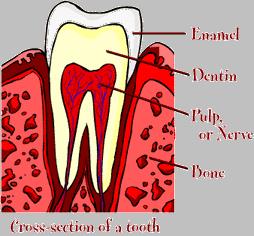
Parts of the Tooth
A tooth has two parts: the crown and the root. The crown of a tooth is covered with enamel and visible in the mouth. The crown is what you see when you smile or open your mouth. The root is embedded in the jaw, anchoring the tooth in its bony socket and normally not visible.
Typically, dental symptoms from ectodermal dysplasias originate in the crown of the tooth.
Dental Symptoms From Ectodermal Dysplasias
What are the Dental Implications of Ectodermal Dysplasias?
Ectodermal dysplasias can have significant dental implications, such as missing or underdeveloped teeth, abnormal tooth shape and size, delayed tooth eruption, reduced salivary function, orthodontic problems, and implant and denture considerations. Learn more about dental symptoms.
These dental symptoms are commonly seen in those affected by various ectodermal dysplasias syndromes.
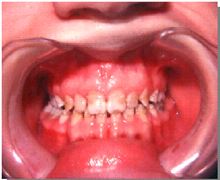
Enamel Problems
Enamel is the hard outer layer of the crown and the hardest substance in the body. Enamel, the first layer of the crown, is the part of the tooth that is derived from the ectoderm. Therefore, enamel problems are common dental symptoms that may occur in ectodermal dysplasias. The enamel may be thinner and softer than average. Thin, soft enamel may lead to increased cavities. There could also be small pitted dentations in the enamel and discoloration of the tooth.
Decreased Saliva
In some forms of ectodermal dysplasia, the saliva or spit production may be reduced, leading to dry mouth. This can also put the individual at increased risk for tooth decay.
To learn more about decreased saliva as a symptom of ectodermal dysplasias and tips for creating a more moist mouth, access our resource on Dry Mouth (Xerostomia) in Ectodermal Dysplasias.
Abnormal Shape
The structure of the teeth can also be affected. The teeth may be globe-shaped and smaller than average. Those teeth that are smaller than average may look conical, pointed, tapered or pegged in shape. Sometimes, the pointed teeth can be especially sharp, creating problems.
The root of the tooth can also be abnormally shaped. The center of the tooth, between the crown and the tooth’s root canals (called the pulp chambers), might be larger than average. This gives the roots an abnormal shape, known as taurodontia.
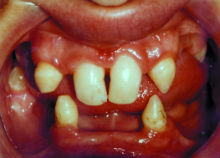
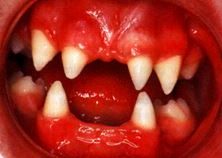
Late Eruption
Teeth may come in later than expected, and the pattern that they come in may be different than usual. The position of the teeth and jaw may also be abnormal in ectodermal dysplasias.
Missing Teeth
In many of the ectodermal dysplasias, affected individuals may have hypodontia, characterized by missing teeth. Individuals may be missing a few teeth or have a complete absence of teeth (also known as anodontia).
Any or all teeth can be missing in people with ectodermal dysplasia. Certain teeth are more likely to be missing such as wisdom teeth (third molars), maxillary lateral incisors and second premolars. Additionally, teeth can be small and/or have an abnormal shape.
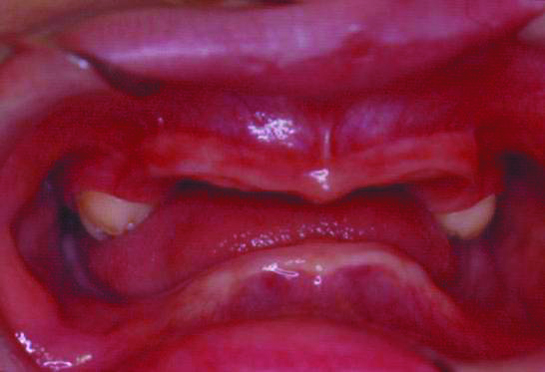
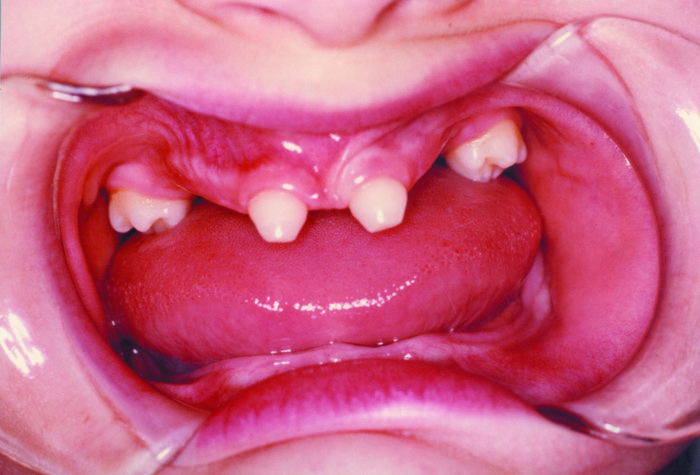
Alveolar Ridges and Bone
When teeth are absent, the ridge-like border of the upper and lower jaws containing the sockets of the teeth, called alveolar ridges, are often underdeveloped. Development of the alveolar bone accompanies tooth bud formation. And, without tooth bud formation, the alveolar bone formation will also be abnormal.
The lack of an alveolar bone and teeth can result in a narrow, pointed chin. These dental symptoms can also cause speech problems and difficulty with chewing and swallowing.
To learn more about dental implants to treat this symptom, check out our webinar on the topic, as well as our resource on the process and options to consider.
To view this information in a PDF format, download our Dental Symptoms Guide.
Treating Dental Symptoms
The dental symptoms for ectodermal dysplasias can be very complex, and they often require a team of dental specialists to manage the treatment. Learn about your dental treatment options and how to navigate health insurance claims for dental treatments.